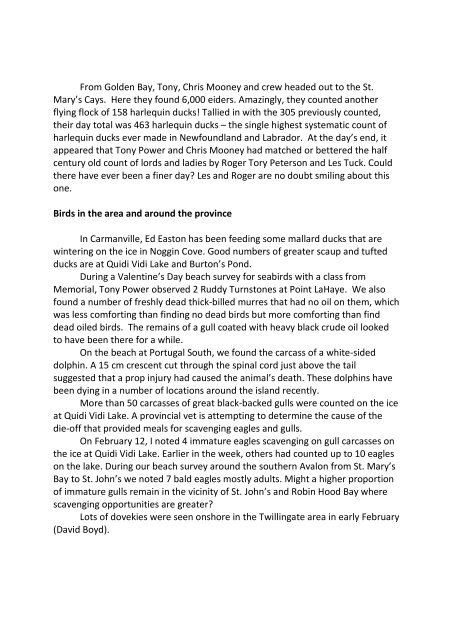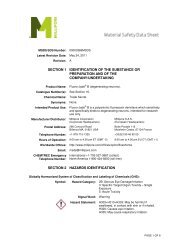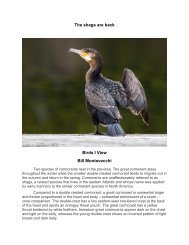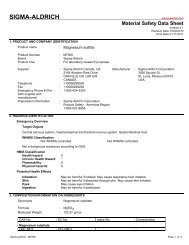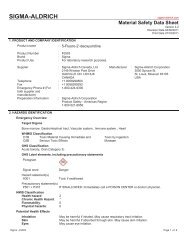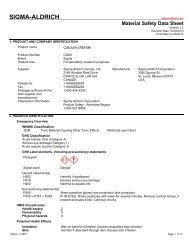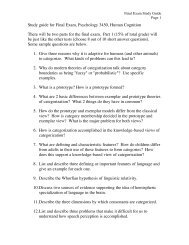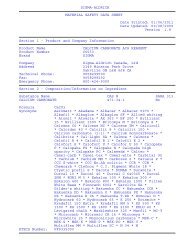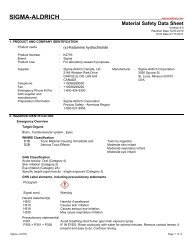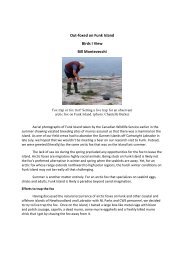Birds I View 108 -The return of harlequin ducks.pdf - Play Psych Mun
Birds I View 108 -The return of harlequin ducks.pdf - Play Psych Mun
Birds I View 108 -The return of harlequin ducks.pdf - Play Psych Mun
Create successful ePaper yourself
Turn your PDF publications into a flip-book with our unique Google optimized e-Paper software.
From Golden Bay, Tony, Chris Mooney and crew headed out to the St.Mary’s Cays. Here they found 6,000 eiders. Amazingly, they counted anotherflying flock <strong>of</strong> 158 <strong>harlequin</strong> <strong>ducks</strong>! Tallied in with the 305 previously counted,their day total was 463 <strong>harlequin</strong> <strong>ducks</strong> – the single highest systematic count <strong>of</strong><strong>harlequin</strong> <strong>ducks</strong> ever made in Newfoundland and Labrador. At the day’s end, itappeared that Tony Power and Chris Mooney had matched or bettered the halfcentury old count <strong>of</strong> lords and ladies by Roger Tory Peterson and Les Tuck. Couldthere have ever been a finer day? Les and Roger are no doubt smiling about thisone.<strong>Birds</strong> in the area and around the provinceIn Carmanville, Ed Easton has been feeding some mallard <strong>ducks</strong> that arewintering on the ice in Noggin Cove. Good numbers <strong>of</strong> greater scaup and tufted<strong>ducks</strong> are at Quidi Vidi Lake and Burton’s Pond.During a Valentine’s Day beach survey for seabirds with a class fromMemorial, Tony Power observed 2 Ruddy Turnstones at Point LaHaye. We als<strong>of</strong>ound a number <strong>of</strong> freshly dead thick-billed murres that had no oil on them, whichwas less comforting than finding no dead birds but more comforting than finddead oiled birds. <strong>The</strong> remains <strong>of</strong> a gull coated with heavy black crude oil lookedto have been there for a while.On the beach at Portugal South, we found the carcass <strong>of</strong> a white-sideddolphin. A 15 cm crescent cut through the spinal cord just above the tailsuggested that a prop injury had caused the animal’s death. <strong>The</strong>se dolphins havebeen dying in a number <strong>of</strong> locations around the island recently.More than 50 carcasses <strong>of</strong> great black-backed gulls were counted on the iceat Quidi Vidi Lake. A provincial vet is attempting to determine the cause <strong>of</strong> thedie-<strong>of</strong>f that provided meals for scavenging eagles and gulls.On February 12, I noted 4 immature eagles scavenging on gull carcasses onthe ice at Quidi Vidi Lake. Earlier in the week, others had counted up to 10 eagleson the lake. During our beach survey around the southern Avalon from St. Mary’sBay to St. John’s we noted 7 bald eagles mostly adults. Might a higher proportion<strong>of</strong> immature gulls remain in the vicinity <strong>of</strong> St. John’s and Robin Hood Bay wherescavenging opportunities are greater?Lots <strong>of</strong> dovekies were seen onshore in the Twillingate area in early February(David Boyd).


